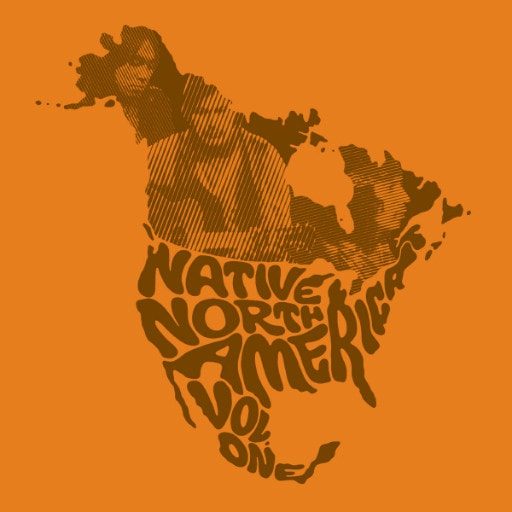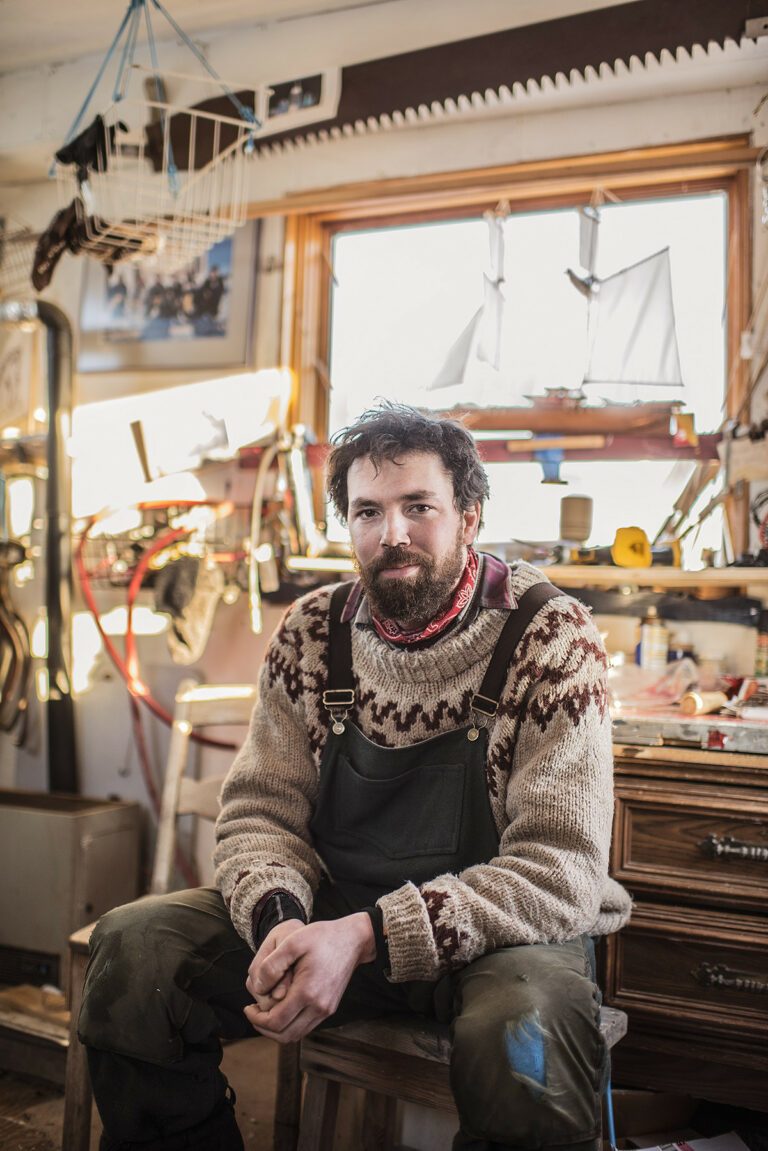You wouldn’t know it from the sparse but powerful riff in Willie Thrasher’s 1979 song “Old Man Carver,” but the Inuvik musician didn’t start playing guitar until relatively late in life. The story goes that none of the guitarists in Inuvik, his older brother included, would teach the young drummer, then playing with local rock ‘n’ roll fixture The Cordells, how to play guitar; if he ever got a hold of a six-string, they figured, no one else would stand a chance with the girls.
Looking a picture of Thrasher from the 1970s, standing in front of Inuvik’s igloo-shaped Our Lady of Victory Church – long hair, over-sized John Lennon glasses, shotgun in hand and nonchalant look on his face – it’s not hard to see their point.
Late last year, almost forty years on, that very picture appeared in none other than Rolling Stone Magazine – quite something for a musician who had spent the last two decades making a living busking on the waterfront of Nanaimo, B.C.
So how did a photo of Thrasher, who is returning to the NWT this weekend for the first time in 20 years to play a concert at NACC, end up in Rolling Stone? Ever seen the Oscar-winning documentary Searching for Sugar Man, about Rodriguez, the fabled songwriter who America forgot? Well it’s kind of like that.
Crate-digging through history
In the 1990s, Vancouver journalist, DJ and music historian, Kevin “Sipreano” Howes, began travelling the country collecting old records from music stores, flea markets, public libraries and vinyl swaps. Digging through record bins from Vancouver to Toronto, Howes started unearthing evidence of a once-thriving but largely forgotten Canadian aboriginal rock, folk and country scene in the 1960s, ’70s and early ’80s. It wasn’t just Buffy Sainte-Marie. From Montreal to Inuvik, aboriginal artists were listening to Hank Williams and the Beatles, strapping on their own guitars and making music that “combined the native consciousness and pride that was exploding after years of oppression by the Canadian government and colonialism with global pop rock,” said Howes, who spoke with EDGE from Vancouver.
Most of the albums he uncovered had long faded into obscurity due to lack of distribution, lack of financial backing, too regional a focus and racism amongst radio programmers and media people. Many of the albums had been recorded by the CBC for broadcast on regional stations and had never seen commercial distribution.
“What I was finding was culturally important and musically strong,” said Howes. “These songs resonated with me and I wanted to share them; it was criminal they didn’t have wider exposure.”
So was born the idea behind Native North America Volume One, an anthology 15 years in the making that collects music from 23 aboriginal artists, and was released last year to international acclaim. (It’s been reviewed or featured in Rolling Stone, the Guardian, and Pitchfork, amongst others).

An anthology 15 years in the making that collects music from 23 aboriginal artists, six of them from the Canadian North
“It was a very historical time,” says Thrasher over the phone from Nanaimo. “I was playing and I started hearing about other Aboriginal musicians: Red Bone, Buffy Sainte-Marie, Willie Dunn, Morley Loon. We played universities and powwows and started hearing other native singers doing their own thing and heard the elders talking about our culture dying. Our albums sold all over where we went but didn’t go as far as we wanted. So I’m really proud of Kevin for doing all this.”
Howes can’t remember where exactly he picked up Thrasher’s album Spirit Child, a five-song 7” EP recorded by CBC in Montreal in 1979 – but it was about $3 or $5 in some small record store, he recalls.
“It was like nothing I’d heard, and I remember looking online and finding some YouTube videos that showed he was busking in Nanaimo. I reached out to him through the internet and told him that I was a big fan, would he be interested in being part of the project? He took the ferry over and we met in Stanley Park.”
Three of Thrasher’s songs appear on Native North America, and he and Howes have been working together on re-releasing Spirit Child, which will be coming out on the Seattle-based label Light in the Attic, which released Native North America, sometime next year.
Because of Native North America, Thrasher’s seen something of a late career renaissance – he recently returned from playing in Seattle and is scheduled to gig in Victoria. Unlike some of the other musicians on the anthology, however, he never really stopped making music. Since learning to play drums in a locker room in Inuvik’s infamous residential school Grollier Hall – “every morning I’d go in there and just pound the hell out of it” – he’s always tried to make a living from music: playing community halls across the Beaufort Delta with the Cordells, touring across Canada 23 time in the ’80s – “Greyhound was my dog team” – and busking on the West Coast today.
Out of the blue
On Friday, John Angaiak from Bethel, Alaska will also join Thrasher on the NACC stage. He’s the only American featured on Native North America Volume One (Volume Two will feature music from the ‘Lower 48’) and unlike Thrasher, he hasn’t really gigged since he recorded I’m Lost in the City in 1971. The album, recorded in Fairbanks as part of a Yup ‘ik language-revitalization effort by the University of Alaska, received considerable local radio play at the time. It even became something of a hit in Greenland, and, in a bizarre turn of events, its single “Ak ‘a Tamaani” was once recorded by a Japanese band; Angaiak figures a Japanese tourist must have picked the album up somewhere along the way. After that one album, however, Angaiak stepped back from music.

John Angaiak | Photo courtesy John Angaiak
“When I was contacted by Kevin Howes, it was out of the clear blue sky,” Angaiak told EDGE over the phone from Bethel. “I was so thrilled, at the same time could not believe that someone like Kevin Howes would contact me. It seemed like out of the hundreds of people he could have picked, he picked me. I was so pleased and honoured.”
“It is very uplifting, like someone made me good enough to play my songs with these wonderful Canadian artists. That album is masterpiece. I listen to it all the time. It’s unfortunate that already a couple of the singers have passed on, but I have their voices and their songs.”







